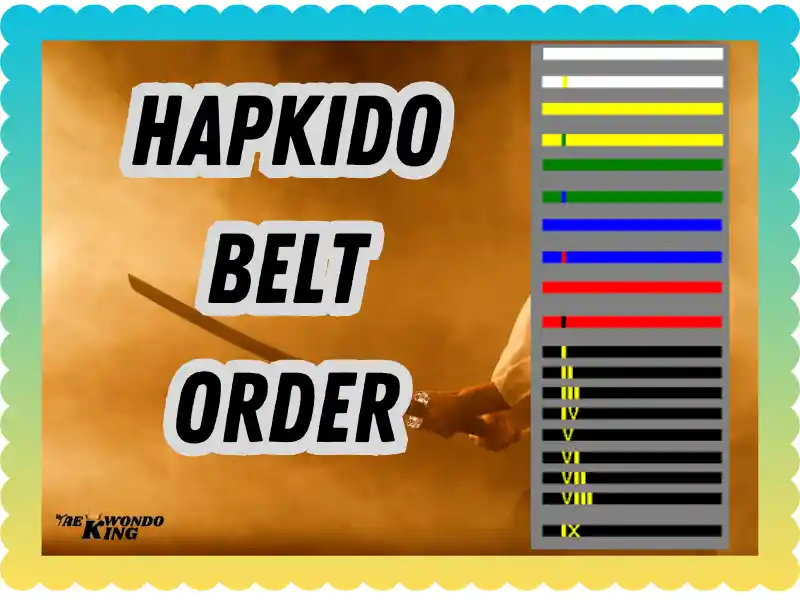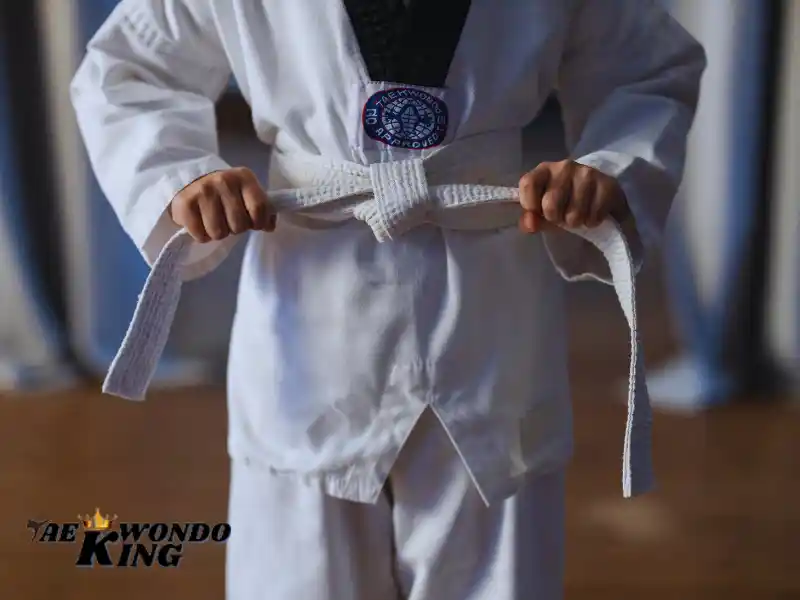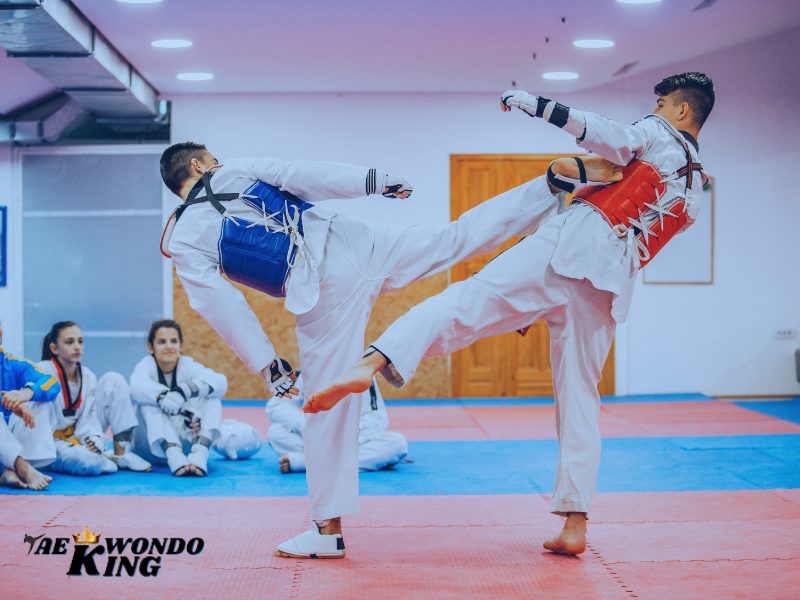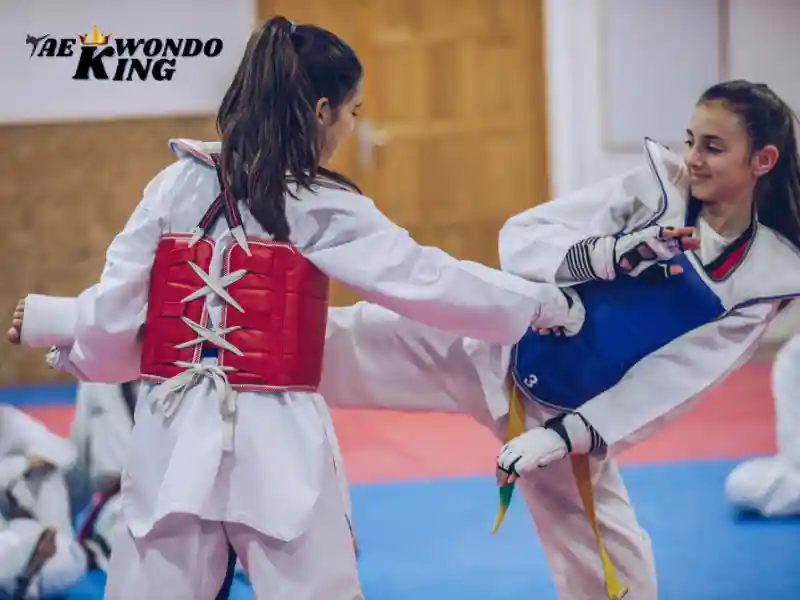
I first started training, and I couldn’t tell a yellow belt from a blue belt. Honestly, I was just trying not to trip over my own feet. But diving into the world of Hapkido belts opened up more than just a color chart, it revealed a journey of growth, discipline, and quiet confidence. Having trained and taught for years, I’ve seen firsthand how each belt carries a story, not just a rank. In this guide, I’ll break down the belt system, what each level means, and how it all fits into your martial arts path. Stick around, this might just help you see your progress in a whole new way.
Get updates by joining Taekwondoking’s official WhatsApp channel.
Hapkido is a powerful martial art. It combines joint locks, strikes, and throws. Like other martial arts, it follows a ranking system. This system uses hapkido belts to show progress. Each belt represents skill and knowledge. Beginners start with white, while black belts show mastery. Understanding belts in Hapkido is important for every student.
This guide covers all the belt levels, their meaning, and how to progress.
See the latest Top-Rated Adjustable Dumbbells Set Price Today Used by Champions.

What Are Hapkido Belts?
Hapkido uses a belt system to rank students. It shows their experience and training level. Each belt color represents growth and learning.
- The white belt means a beginner.
- The black belt means mastery.
- Colored belts show progress between these two.
Different schools may have slight variations. However, most follow a similar system. Start Your Hapkido Journey Today!
Why Do Martial Arts Use Belts?

Belts are common in martial arts. They help students see their progress. Find Out What Each Belt Means! They also create goals and motivation.
Structure and Discipline
- Belts provide a clear path.
- Students know what they need to learn.
- They help maintain order in training.
Motivation and Achievement
- Each belt is a milestone.
- Passing tests builds confidence.
- It keeps students engaged in learning.
Respect and Tradition
- Belts show experience and rank.
- Higher belts have more responsibility.
- They guide and help lower-ranked students.

Belt Levels in Hapkido
The hapkido belt system follows a structured order. Students move from beginner to expert.
1. White Belt (Beginner Level)
- Represents purity and a fresh start.
- Students learn basic stances and movements.
- Focus on discipline and body awareness. Achieve Your Martial Arts Goals Today!
2. Yellow Belt
- Introduces fundamental techniques.
- Learning simple joint locks and strikes.
- Improved coordination and control.
3. Orange Belt
- Builds on yellow belt knowledge.
- Students learn more powerful strikes.
- Focus on balance and footwork.
4. Green Belt
- Intermediate level begins.
- Learning advanced joint locks and throws.
- Developing stronger self-defense skills.
5. Blue Belt
- Techniques become more complex.
- More emphasis on weapon training.
- Improving speed, power, and accuracy.
6. Brown Belt
- Advanced techniques are introduced.
- Mastering counter-attacks and pressure points.
- Preparing for black belt testing. Train Hard and Earn Your Next Belt!
7. Red Belt
- Nearing mastery in hapkido.
- Deep focus on strategy and combinations.
- Refining all techniques for efficiency.
8. Black Belt (Expert Level)
- Represents true skill and understanding.
- Requires years of dedication.
- Focus on teaching and leading others.
Higher degrees of black belts exist. These show continued mastery over time.
How to Advance Through Hapkido Belts
Progressing through belts in Hapkido takes practice. How Long to Get a Black Belt? Learn More! Hard work and patience are necessary.
Consistent Training
- Regular practice builds muscle memory.
- Focus on both technique and application.
- Train at least 3–4 times a week.
Understanding Techniques
- Learn the purpose of each movement.
- Apply techniques in different situations.
- Train with partners to improve reflexes.
Physical and Mental Strength
- Hapkido requires endurance and flexibility.
- Strength training improves performance.
- Mental focus helps in sparring and self-defense.
Listening to Instructors
- Instructors provide valuable feedback.
- Follow their guidance for faster progress.
- Respect the traditions and discipline of Hapkido.
How Long Does It Take to Earn a Black Belt?
The time varies by school and student effort. On average:
- White to Black Belt: 3–5 years
- Higher Black Belt Degrees: Many more years
Dedication and commitment are key. Master Hapkido – One Belt at a Time!
Differences in Hapkido Belt Systems
Not all schools use the same belt system. Some may have extra belts, like purple or different shades of green. Others may use only a few belts.
- Traditional Hapkido – Fewer belts, longer training periods.
- Modern Hapkido – More belts, structured progressions.
Checking with your school helpsyou understand their ranking system.

Testing for Hapkido Belts
Belt tests in hapkido involve:
- Demonstrating techniques.
- Performing self-defense moves.
- Sparring or breaking boards.
- Showing discipline and control.
Each test becomes harder at higher levels. Students must prove their skills before advancing.
What Happens After Black Belt?
The black belt is not the end. It is the start of true mastery.
- 1st Degree (Shodan) – Basic black belt level.
- 2nd to 5th Degree – Developing advanced techniques.
- 6th to 9th Degree – Master level, focused on teaching.
Grandmasters often have a 9th-degree black belt. They dedicate their lives to the art.
Hapkido vs Other Martial Arts Belt Systems
Many martial arts use belts. But how do they compare?
- Hapkido vs Taekwondo – Hapkido focuses on self-defense, Taekwondo on kicks.
- Hapkido vs Judo – Hapkido uses joint locks, Judo specializes in throws.
- Karate vs Hapkido – Karate emphasizes striking, Hapkido blends techniques.
Each martial art has unique strengths. But hapkido offers a complete self-defense system.
See the latest Top-Rated Adjustable Dumbbells Set Price Today Used by Champions.

Do All Hapkido Schools Require Belt Testing?
Most do, but some do not. Some schools focus on skill development instead of ranks. However, belts provide structure and goals.
- Some schools allow students to progress naturally.
- Others require formal tests and evaluations.
Understanding your school’s policy is important.
Benefits of Training in Hapkido
Earning hapkido belts is rewarding. But the journey itself has many benefits.
- Improves self-defense skills.
- Builds strength and flexibility.
- Increases confidence and focus.
- Enhances discipline and respect.
Learning hapkido is not just about belts. It is about growth in mind and body.
Conclusion: Why Hapkido Belts Matter
The belts in hapkido represent more than rank. They show dedication, skill, and knowledge.
- Each belt has a purpose.
- Hard work leads to progress.
- The black belt is just the beginning.
Training in hapkido builds character and strength. No matter the belt, the journey never ends. Level Up Your Skills with Hapkido!
FAQs About Hapkido Belts
Hapkido has several belt levels, usually starting from white and progressing to black belt.
The order varies by school, but common levels are:
White
Yellow
Green
Blue
Red
Black
It usually takes 3 to 5 years, depending on training frequency and skill level.
Each color represents progress and skill growth, from beginner to expert level.
No, some schools may have more or fewer belts, but the black belt is always the goal.
Yes! Black belts progress through Dan (degree) levels, starting from 1st Dan up to 9th Dan or higher.
Most schools require students to pass tests for each level, but highly skilled students may progress faster.
Yes, most tests include sparring, self-defense techniques, and forms.
Testing depends on the school’s rules, but usually every 3 to 6 months for lower belts.
Yes, most instructors hold at least a 1st Dan black belt before they can teach students.
Join a Hapkido Class and Begin Your Training!

Founder, Owner, and CEO of TaekwondoKing.
He is one of the top 100 martial artists in the World and among the top 20 referees in Bangladesh.
Ehatasamul Alom is an esteemed Kukkiwon Certified Taekwondo 3rd Dan Black Belt with over 15 years of experience in this dynamic martial art. Born in Rajshahi, Bangladesh, Ehatasamul’s journey with Taekwondo began at the tender age of seven. His passion led him to compete at national and international levels, where he has bagged numerous awards and honors. He is also a member of the Taekwondo National Referee Panel.
With a Bachelor’s degree in Sports Science from the prestigious Rajshahi University, Ehatasamul has a deep understanding of the technical and scientific aspects of martial arts and some other martial arts.
In 2022, Ehatasamul created the “TaekwondoKing.com” to share his knowledge, Free Resources, Values, and Real experiences. His articles focus on Taekwondo training techniques, competition strategies, Sport Products Reviews, and the art’s rich history and philosophy. He also writes about the importance of mental fortitude and discipline, key aspects of his teaching philosophy. He has already launched many sports, Taekwondo, and health-related Free online tools. His goal is to inspire both beginners and seasoned practitioners worldwide through insightful and engaging content.
If you need any help, contact Ehatasamul Alom at any time.





A brilliant blog for anyone looking to grow in Hapkido. So many insightful takeaways from every post!
Hello,
The quality of these Hapkido belts is excellent. Each one feels sturdy and well-made, a tangible representation of my dedication and training. It’s motivating to see the progression of colors, marking each step of my journey in the art.
Thanks
I appreciate the vibrant and consistent colors of these belts. They look and feel authentic, adding to the sense of tradition in my Hapkido practice.
Tying on the next color always brings a feeling of accomplishment and renewed focus.
I’m so glad I found this blog. The Hapkido tips are priceless! Tnx
On this platform your articles here are so inspiring!
Having this set of Hapkido belts is a great visual reminder of how far I’ve come. Each belt holds memories of challenges overcome and new skills learned. It’s a source of pride and encouragement to keep pushing forward.
Thanks a lot.
Hello,, Taekwondoking advice here on Hapkido is practical and easy to follow—love it! thanks
I feel more confident in my training thanks to this blog. thanks
Your dedication to promoting Hapkido is truly commendable!
Hey! This is kind of off topic but I need some guidance from an established blog. Is it tough to set up your own blog? I’m not very techincal but I can figure things out pretty quick. I’m thinking about setting up my own but I’m not sure where to start. Do you have any points or suggestions? Many thanks
Я восхищаюсь глубиной знаний, которыми здесь делятся.
Ваш блог — отличное руководство по улучшению техник.